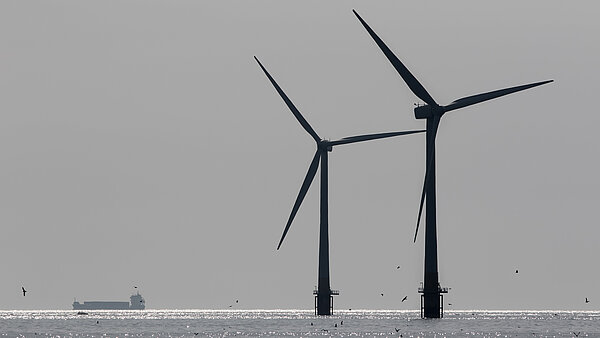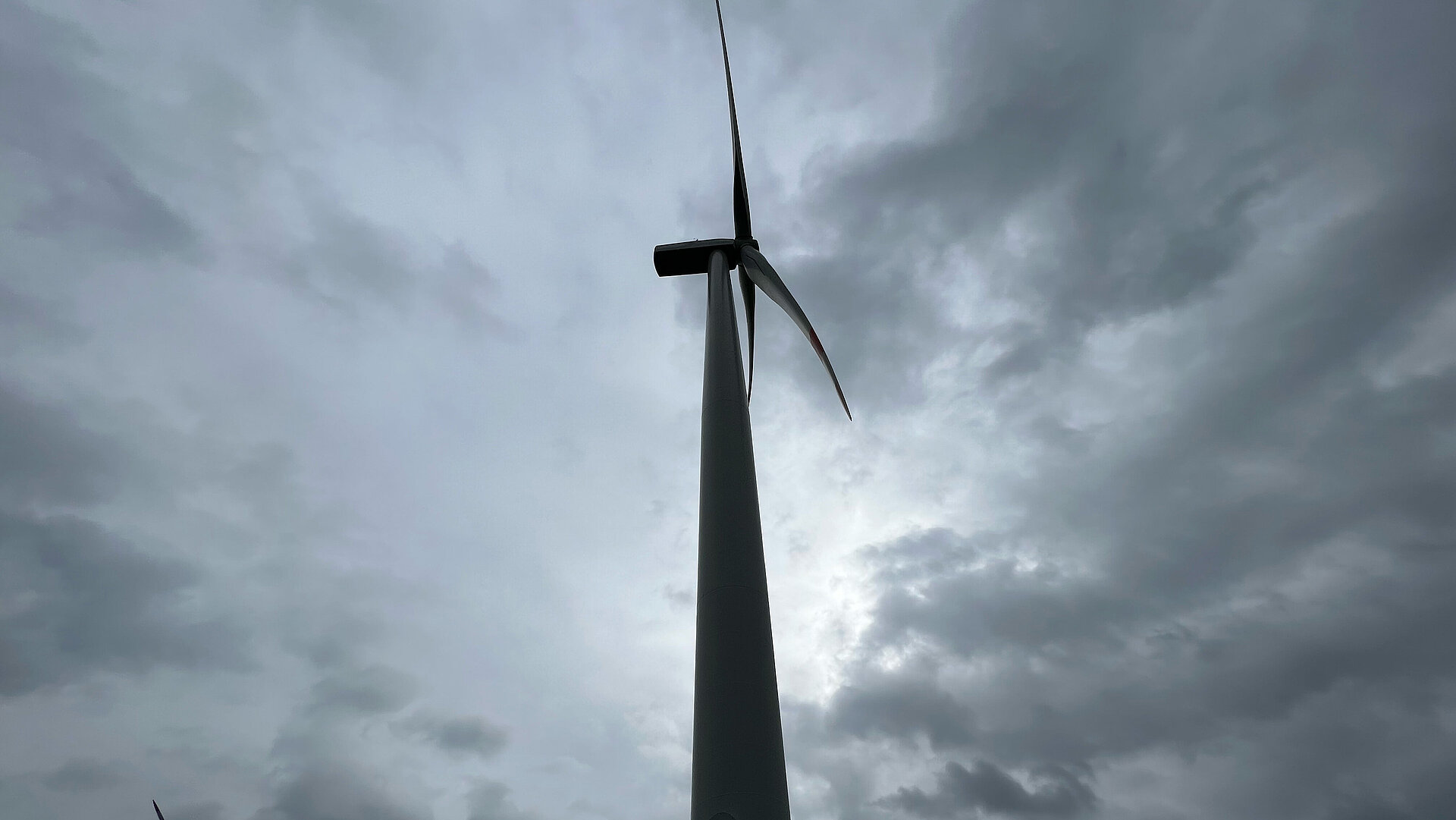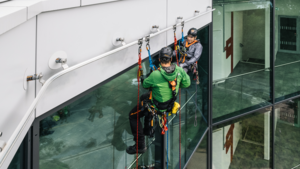Wind turbines - the giants on land and water - reach dizzying heights in order to generate energy from the power of the wind. The various structures differ significantly in terms of construction, form, height, and substructure, and also in terms of onshore or offshore location. Yet they have one very important point in common. For maintenance, servicing, or repair tasks on or in the wind turbine, the service engineers find themselves in a fall-risk area. Here, a modern, reliable, and certified fall protection system forms the basis of being able to perform the above-mentioned activities in the first place. In this blog post, we explain the challenges relating to each danger area, how fall protection and wind power interact in general, the solutions which we offer for this and, as a modest digression, how the development of wind energy came about.
The challenge in making the system usable
Every type of wind turbine has its own specifications linked to various challenges. For example, they differ in the size of the nacelle, usually in height, and also in the available space left by installed systems. Not every wind turbine has an interior service lift for ascent and descent. Such a lift is generally absent from smaller turbines, and so self-powered ascent and descent is required when the nacelle needs to be accessed. However, regardless of the turbine types, one thing is certain: every turbine requires a suitable anti-fall safety solution which is tailored to the situation, because, in order to perform his tasks, the service engineer must be able to rely 100 % on the fall protection system.
Danger sources in practice:
In general, from the time of the ascent onwards, the service engineer working in or on a wind turbine is permanently in a fall-risk area. The following sources can represent danger for the user:
- Incorrect uses of the available safety system.
In principle, a fall protection system should or must be designed in such a way that incorrect use can be prevented from the very outset. In spite of everything, much responsibility remains with the user of the safety solution – for example, if the slider has not been installed in the safety system correctly, then this represents a source of increased danger in the event of an emergency. Other incorrect uses include non-compliance with legal requirements and directives, such as DGUV 112-198/199 for anti-fall PPE.
- Vertical ascent and descent along the ladder.
In general, ascent and descent naturally represents a source of danger. However, appropriate fall protection reduces or neutralises danger in this area. In the event of an emergency or worst case scenario, such as a fire in the nacelle, then action is taken as defined in the rescue concept. If the sole option is descent via a ladder, then practice shows that this often cannot take place optimally, especially with older safety solutions. Mostly, the blame rests with an unwieldy slider which “catches”along the rail system.
- Single anchor points which are badly positioned or non-existent.
Ascent without a service lift, and therefore using the ladder takes some time. In this case, platforms or standing areas are located at regular intervals, and can be used by the service engineers for resting. There is an increased danger of falling when transiting from the ladder to these platforms. Quite frequently, various anchor points are not ideally positioned, and this makes re-attaching more difficult. In addition, badly positioned single anchor points increase that the danger that the lanyard will be broken off by sharp edges which are present. It also often happens that poorly positioned single anchor points on the upper surface of the wind turbine(externally) force the service engineer to walk along the fall edge.
- Effects of weather on the top surface of the wind turbine
Last but not least, the effects of weather also represent a source of increased danger when it comes to accessing the exterior, i.e. the top surface of the wind turbine.
However, one thing is certain: high standards are demanded in terms of safety solutions, especially for wind power applications, regardless whether these are onshore or offshore installations. Depending on the type, different fall protection systems are required, and even essential. In the next section we go into detail about the safety solutions which we provide for neutralising danger areas.
Solutions for neutralising potential danger areas
Not every safety system is appropriate for a given application. In order to achieve optimum fall protection, a detailed plan and risk assessment is required. This is the only way to ensure that even the construction of the wind turbine itself can proceed in safety. It is important that special attention is paid here to appropriate certification, and that the safety systems function faultlessly.
Neutralise the ascent/descent danger area by using TAURUS
Safe ascent and descent is one of the most important points for wind turbines. A rail system is particularly suitable for inshore as well as offshore systems. Our TAURUS-VERTIKAL ensures continuous protection along the ascent and descent, and it also protects transitions from the horizontal to the vertical plane. The matching TAURUS-GLEIT-V21 slider allows smooth movement along the system. In particular, the descent can take place rapidly in an emergency. We also provide the appropriate personal protective equipment (PPE) which ideally matches our rail system. The PSA-STRING-1-PRO ensures maximum protection combined with maximum comfort, thanks to the padding at the shoulders, legs, and back, as well as kidney protection.
In addition, the LiSA Life Safety System provides a reminder when the inspection of the harness is due. Find out about the necessary PPE lanyard here. There is also the option to position various single anchor points for the transit from the ladder to the platform so that the necessary safety is also ensured here.
Continuous safety on the roof of the wind turbine and its structure (ventilators, coolers, anemometers) - a rail system provides the solution
A rail system can be installed as fall protection on the outside of the turbine. This provides the necessary safety without attaching or detaching, and the service engineers are able to concentrate fully on the activities which they have to perform there.
Appropriate training can prevent incorrect uses
A significant topic with regard to wind turbines is the knowledge of the correct use of the industrial safety measures, and therefore of the fall protection system. Appropriate training is necessary in order to prevent possible incorrect uses, and also to be able to perform a rescue correctly in an emergency. Visit our INNO|school online to find out more about our training courses for this topic.
Digression: Wind energy
In Germany wind energy has played a central role in the spectrum of renewable energies for more than two decades already – in 2020 around 132,000 gWh of electric power were generated from wind turbines (source:https://www.umweltbundesamt.de/themen/klima-energie/erneuerbare-energien/erneuerbare-energien-in-zahlen#strom). By 2030, this amount should have increased significantly. But also Austria, a classic country for hydropower, will rely on renewable energy sources even more in future. Already in 2021 75% of the power requirement (source: https://www.umweltbundesamt.at/energie/erneuerbare-energie) was covered by renewables – and this proportion is to be increased even more by 2040, with the result that fossil fuels can be driven out of the portfolio completely.
This is where wind energy naturally plays a central role. A brief glance into the past indicates that also in Austria the supply from wind energy increased between 2005 and 2021 by rather more than 9 % annually; in 2022 83,000 gWh of wind energy were generated (source: https://windfakten.at/?xmlval_ID_KEY[0]=1234).
Summary
The potential challenges vary depending on the type of wind turbine. In order to neutralise these danger sources as much as possible, a professional safety concept and a matching risk assessment are required. The respective fall protection system is then planned within this safety concept. Every safety system has its pros and cons, and must be specified individually (particularly true for wind turbines). For example, in the onshore and offshore areas, a rail system is suitable for vertical ascent, in order to ensure continuous safety. When a suitable slider is used, a rapid descent is possible in an emergency. A professional safety concept matches different safety systems to one another perfectly, and combines various solutions together.
If you want to find out more about our solutions for wind turbines, then a contact partner will be happy to advise you.
















